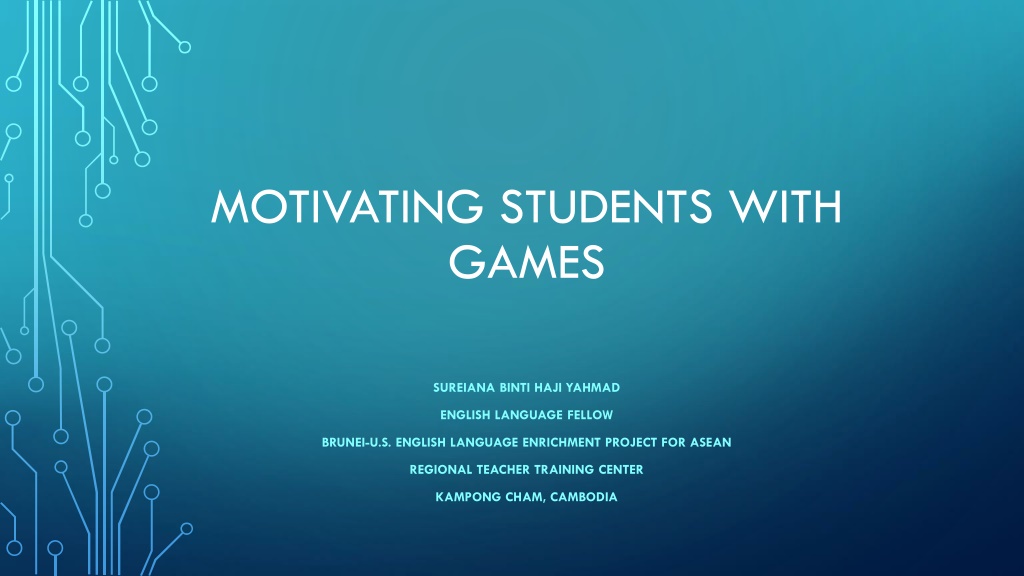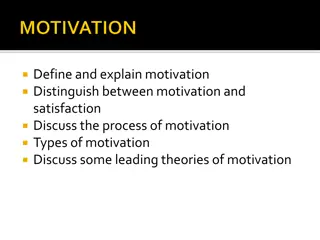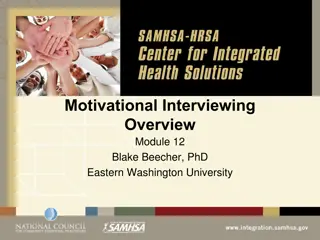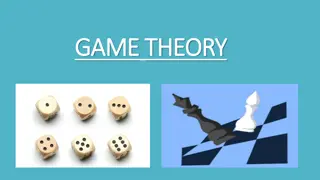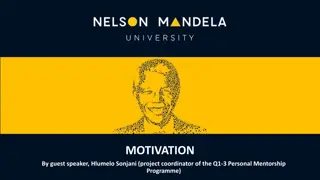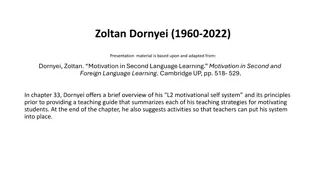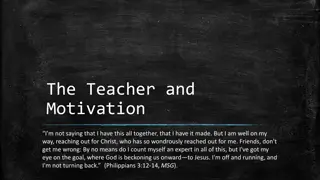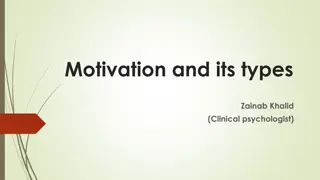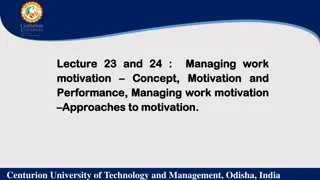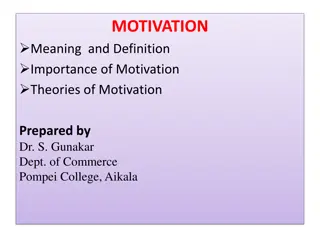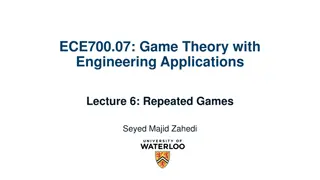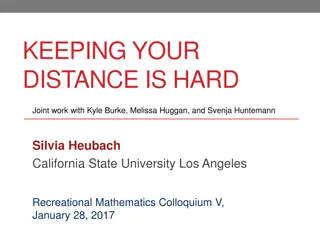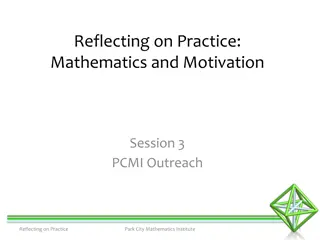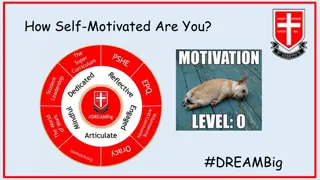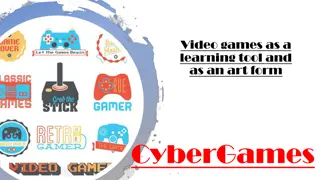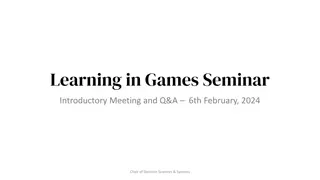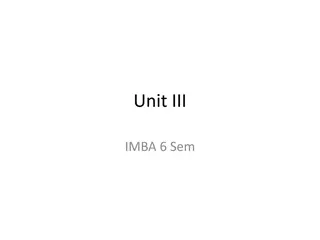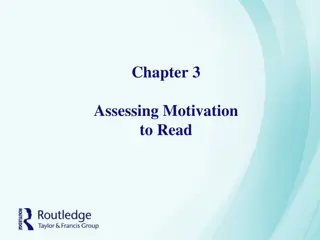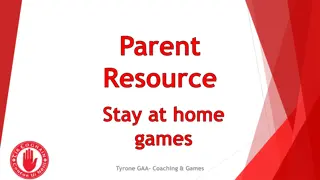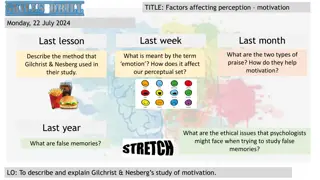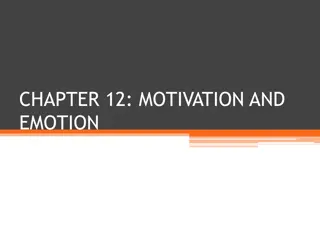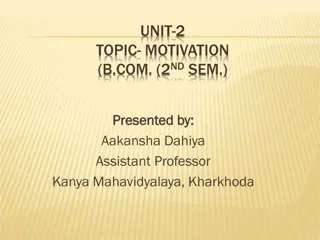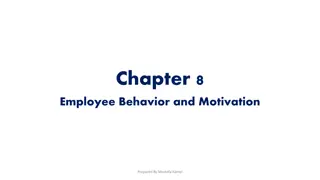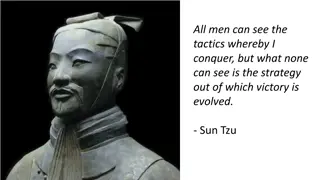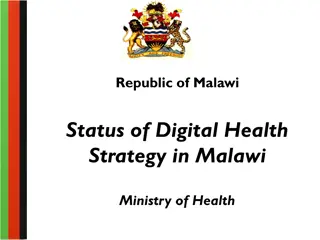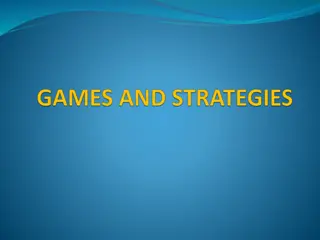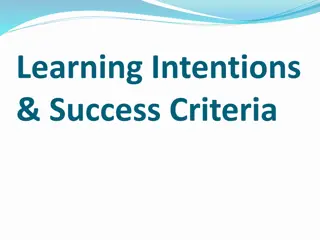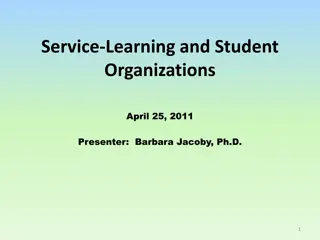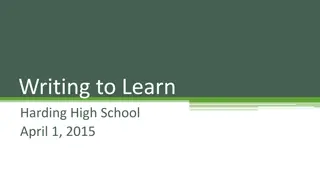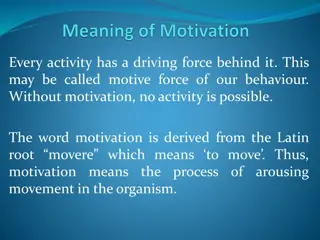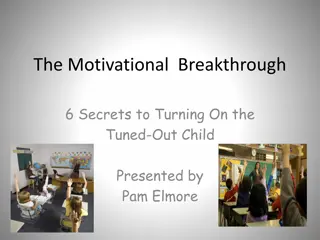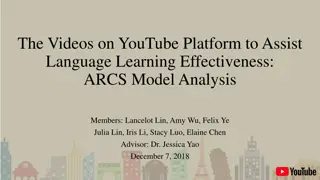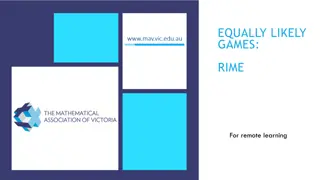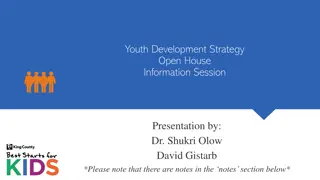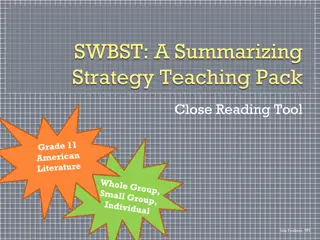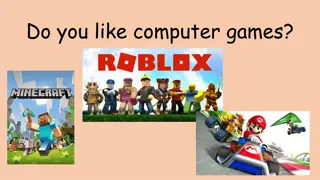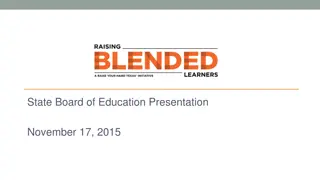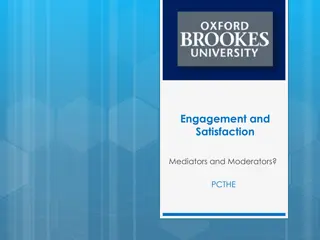Enhancing Learning Through Games: A Strategy for Student Motivation
Explore the power of incorporating games in education to motivate students, increase engagement, and promote active learning. Discover how games facilitate recalling and applying academic content while fostering social interactions and uncovering hidden talents. Learn why fun and interactive learning experiences are essential for student development and success.
Uploaded on Oct 04, 2024 | 0 Views
Download Presentation

Please find below an Image/Link to download the presentation.
The content on the website is provided AS IS for your information and personal use only. It may not be sold, licensed, or shared on other websites without obtaining consent from the author. Download presentation by click this link. If you encounter any issues during the download, it is possible that the publisher has removed the file from their server.
E N D
Presentation Transcript
MOTIVATING STUDENTS WITH GAMES SUREIANA BINTI HAJI YAHMAD ENGLISH LANGUAGE FELLOW BRUNEI-U.S. ENGLISH LANGUAGE ENRICHMENT PROJECT FOR ASEAN REGIONAL TEACHER TRAINING CENTER KAMPONG CHAM, CAMBODIA
OBJECTIVES Aware of how useful it is to involve games as part of way to motivate your students in their learning. Participate in the activities.
FLOW OF THE PRESENTATION: Definitions of motivating students with games. Sharing your thoughts Advantages Keep you moving
DEFINITIONS One powerful strategy that successful teachers use to lend interest to academic drill, practice, and review is to structure these learning opportunities so that they contain elements of 'fun.' Like most of us, students are engaged by game-like tasks that are novel or unexpected, include various rewards, foster a safe level of competition, or promote positive and cooperative social interactions. Considers as one effective strategy that makes drilling, practice and reviewing to take place that contain elements of fun . Apart from being interesting it also consists of rewards, fairness and to inculcate positive and cooperative social interactions. http://www.interventioncentral.org/academic-interventions/general-academic/games-contests-puzzles-entertaining-ideas- educating-students
DEFINITIONS Has the potential to push students to take a more active role in recalling and applying previously taught academic content. Allow all students to be fully participated, to be more active in classroom. Chances to recall and apply what they have learned in previous lesson. http://www.interventioncentral.org/academic-interventions/general-academic/games-contests-puzzles-entertaining-ideas- educating-students
DEFINITIONS Games also help students by discovering their hidden talents, help them interact with different people and make them learn about many things outside their own environment It helps the students to interact with different people. To realize their abilities/hidden talents. Make them to think outside of the box. https://targetstudy.com/articles/importance-of-games-in-students-life.html
DEFINITIONS PLAYING SHOULD BE FUN! In our great eagerness to teach our children we studiously look for "educational" toys, games with built-in lessons, books with a "message." Often these "tools" are less interesting and stimulating than the child's natural curiosity and playfulness. Play is by its very nature educational. And it should be pleasurable. When the fun goes out of play, most often so does the learning." - Joanne E. Oppenheim (Kids and Play, ch. 1, 1984)
Share your thoughts Advantages of using games with students?
Share your thoughts Match the definitions to correct heading.
ADVANTAGES OF GAMES Competition factor: It generates positive competition among peers to achieve stated objectives of the game (to win & practice targeted language structure). Discipline factor: Allow the students to be able to follow series of instructions/rules of the game.
ADVANTAGES OF GAMES Unity factor: Teaches them about teamwork, sense of belonging and unselfishness. It also encourage the students to play for team rather than for his/her own personal accomplishment. Confidence factor:It boosts up the students confidence to practice the language in context (through listening, speaking, reading and writing).
GAMES! GAMES!! GAMES!!! POSITIVE MOVEMENTS IN CLASSROOM
1. Information Gap Clear instructions/rules Time limit Students will work with a partner. Each one has incomplete information. The aim of the activity is for students to exchange information so that each has complete information. Information gaps work well to focus students on target language. Students may be asking questions to exchange information, work with lists, pictures, or grids.
PROCEDURE: Seat students so they cannot see the other student s paper (in pairs). Sometimes having a visual barrier such as book standing up on edge is helpful. Model how the activity works the first few times you use it. You be Student A and have a volunteer or other student play Student B. Model the language necessary to complete your part of the information. The following ideas all assume that the students are working in pairs. They each have partial information. Each type of information gap can be modified for different target language.
How much does the ____________ cost? The _________ costs ___________. Student A Student B ________ ________ ________ ________ $4.00 $0.50 $25.50 $1.50 ________ ________ ________ ________ $43.70 $0.30 $3.00 $2.00
2. Fast Ball Clear instructions and rules. Time limit. In a big circle. The aim of the activity is to get students to practice target language structure, vocabulary, others. To get them alert and focus (listening, speaking and comprehension). Opportunity to practice the language.
PROCEDURE Get the student to stand in a big circle. Keep a distance from each other. One of the student asks a question before throwing the ball (e.g. What is your name? How old are you? Where do you live?...) Others will listen and get ready to catch the ball and answer the question. The person who could not catch the ball, bad throws and unable to answer the question correctly will be out of the game. The last one standing will be the winner.
List of questions and answers? Examples: What is your name? My name is ________________. How old are you? I am _____ years old. What is your favourite _________? My favorite _________ is ____________.
Lets practice Which would you prefer, to lose your sense of smell for 3 days or to live without your smartphone for 3 days? Why?
3. Running for your words! Clear instructions and well timed. Text provided at a distance. Students in pairs/groups. The 1st runner goes to text. Reads and understand it (one sentence at a time). The runner returns to partner and tells the says the sentence. The writer writes it. The 2nd runner runs for the next part of text. Continue until text is completed. Sharing session. The pairs/ groups managed to get most of the information accordingly (based on their understanding), considers the winner.
